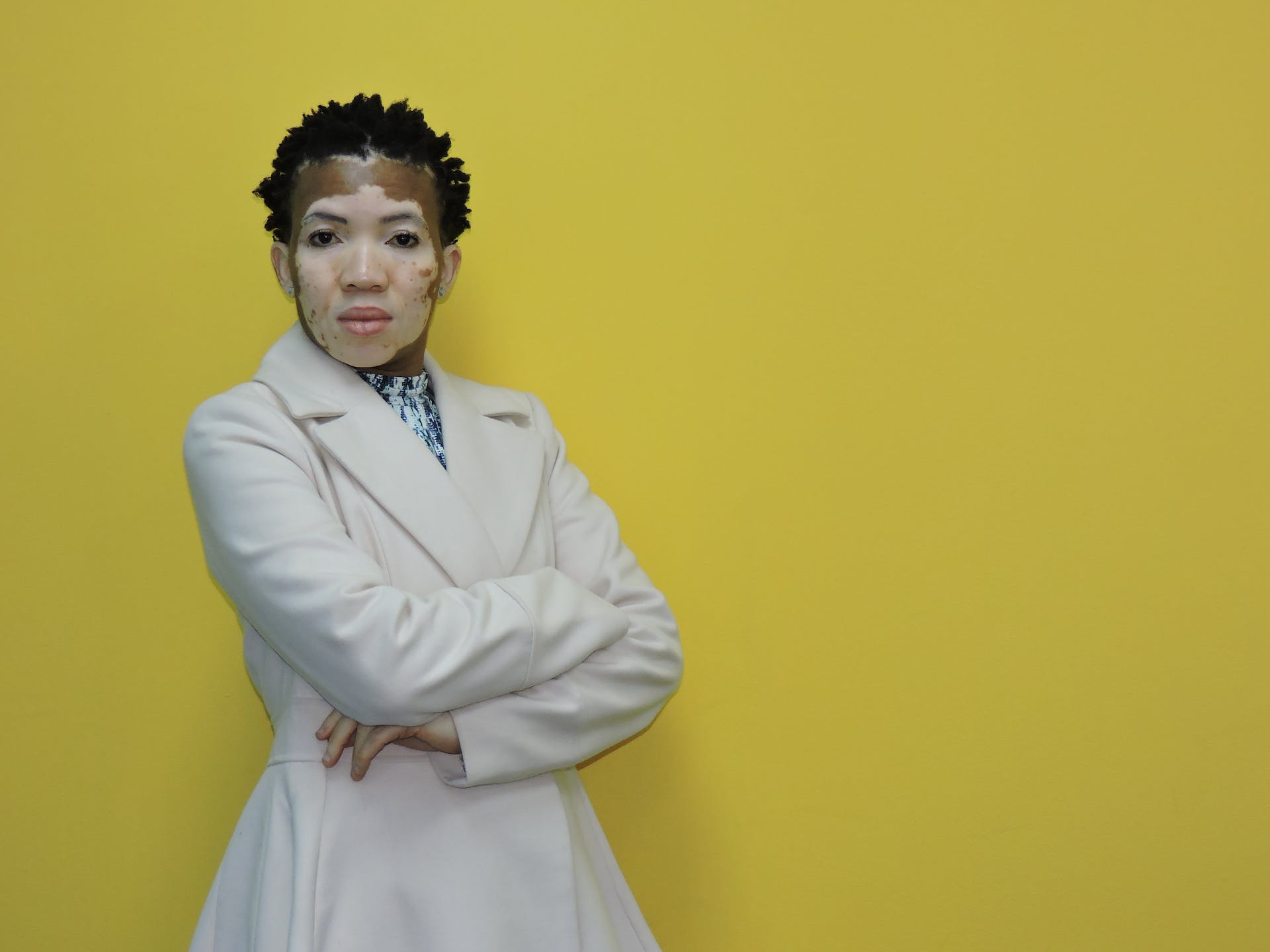
 By
Venita Adams
By
Venita Adams

Vitiligo is a skin condition characterized by the loss of pigment, resulting in irregular white patches of skin. It’s a complex condition with many aspects to consider. This blog post aims to answer some of the most frequently asked questions about vitiligo.
People with vitiligo are advised to avoid certain foods and lifestyle habits that could potentially worsen the condition. These include:
Vitiligo is an autoimmune disorder and currently has no cure. However, in some cases, the skin may regain its color without treatment. The progression and effects of vitiligo vary greatly among individuals.
The best skincare for vitiligo focuses on protection and management. Here are some recommended practices:
While there’s no officially prescribed “vitiligo diet,” eating a healthy diet full of good nutrients and drinking lots of water can be beneficial. Immune system-boosting foods that contain phytochemicals, beta-carotene, and antioxidants are recommended.
Vitiligo can be exacerbated by several factors, including stress, overexposure to the sun, and exposure to certain chemicals. Additionally, skin trauma, sunburn, cuts, and stressful emotional events can trigger vitiligo.
Vitiligo is believed to be triggered by a combination of genetic, autoimmune, and environmental factors. The exact cause is not known, but it might show up due to stress, overexposure to the sun, or exposure to certain chemicals.
While there’s no cure for vitiligo, treatments can help to manage the condition and restore some color to the skin. These include:
People with vitiligo are advised to use mild, preferably glycerin-based soaps for bathing. Vigorous rubbing with a towel should be avoided as it could cause friction on the skin and trigger vitiligo.
While vitiligo can’t be fully prevented, there are ways to manage it and possibly prevent it from getting worse. These include:
Remember, it’s important to consult with a healthcare provider for personalized advice and treatment options. This guide provides general information and should not replace professional medical advice.





Never miss an important update. Be the first to receive our exclusive beauty tips straight into your inbox.